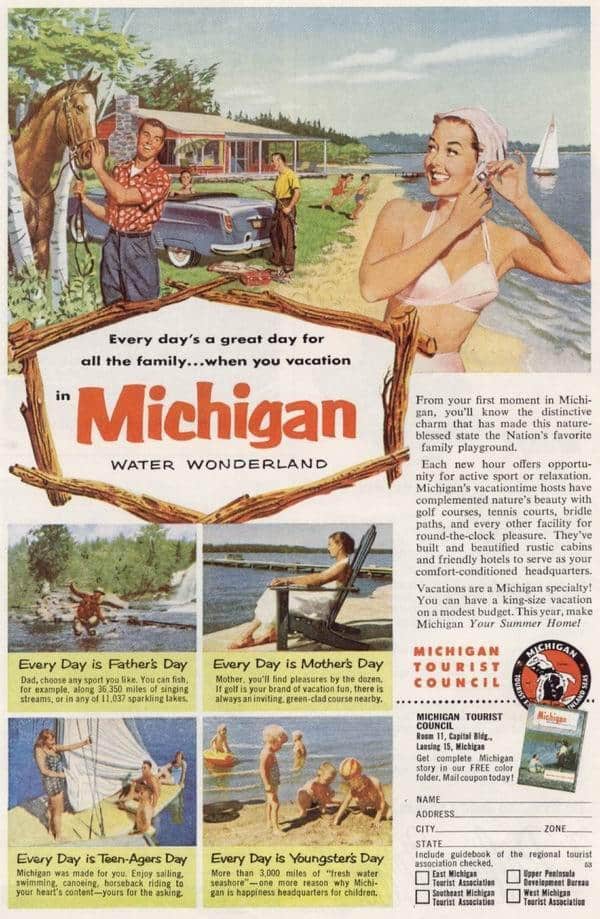Some classic video from the Keener Era
Remember the Sheik? Bobo Brazil? Here’s some footage of these two great characters in combat from a 1960s episode of Big Time Wrestling.
http://www.youtube.com/watch?v=4DL5xvLRcsQ&feature=player_embedded
Besides the Detroit Tigers, nothing spoke of summertime like Detroit Dragway.. Here’s a classic radio commercial from 1966.
Some of us may have forgotten it, but Detroit was a contender for the Olympics in the 60s. Here’s a 1965 promotional film, narrated by Mayor Jerome Cavanagh, entitled “Detroit: A City on the Move”.
Scott Regen on “The Downside of Anti Aging”
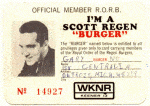 Scott Regen is alive and well and living in Florida. After a long and fruitful career in broadcasting, the record business and journalism, The Head Burger now writes occasional Op Eds for the Orlando Sentinel, teaches meditation and enjoys his grandchildren. His wisdom fits well in this space, where we celebrate the soundtrack of our young lives, while fully facing the adventures ahead.
Scott Regen is alive and well and living in Florida. After a long and fruitful career in broadcasting, the record business and journalism, The Head Burger now writes occasional Op Eds for the Orlando Sentinel, teaches meditation and enjoys his grandchildren. His wisdom fits well in this space, where we celebrate the soundtrack of our young lives, while fully facing the adventures ahead.
Written on August 24, 2011 –
This past Sunday was National Senior Citizens Day. It seems like a good time to reflect on the value our culture places on — youth.
I recently overheard a small boy with his family in a restaurant. An adult asked how old he was. He responded that he was 4.
He was next asked, “When will you be 5?” Everyone laughed when he answered, “When I’m done being 4.”
Unknowingly, he echoed former Harvard professor Richard Alpert (Ram Dass) and his 1971 book, “Be Here Now.” And Eckhart Tolle’s 1997 New York Times best-seller, “The Power of Now. Oprah Winfrey brought Tolle’s book to our awareness, as well as “A Course in Miracles,” which Tolle quotes.
All three books advise: We can’t be 5 when we’re 4, 40 when we’re 50, or 50 when we’re 60. We can only be who we are — now.
So the downside of anti-aging is, first: It’s impossible. Second: It guarantees a psychological denial of all we’ve been and done. Third: It denies who we are now.Perhaps it’s a lighter form of anti-aging — hair coloring. Or a harsher form — plastic surgery. Either way, it affirms being or looking younger is better than being or looking older. And because we’re older, we’re somehow not good enough, and must try to look younger.
Why do we do it? Psychiatrist Carl Jung wrote: “The birth of a human being is pregnant with meaning, why not death? For twenty years and more the growing man is being prepared for the complete unfolding of his individual nature, why should not the older man prepare himself twenty years and more for his death?”
Jung interprets our anti-aging masquerades: We’ve become a youth-obsessed culture and, of consequence, a death-fearing culture.
Even the young are handcuffed to the double bind, for they, too, will age.
Why have we bought into the competitiveness of being younger? What are we trying to prove and to whom? Why have we become so outer-approval focused? For whose approval, whose love, for whose “I’m OK” do we hunger? What are we not facing and why?
So, what can we do? We can acknowledge the truth of the Byrds’ No. 1 “Book of Ecclesiastes” song: “Turn! Turn! Turn! To everything there is a season.” And, we can become conscious of the unavoidable psychological conflicts anti-aging arouses. In these ways, we encourage gratification, meaning and love, toward all ages — now.
http://www.youtube.com/watch?v=V6jxxagVEO4
Happy 80th Birthday to the Drive-In Theater
The first drive-in movie theater opened in June of 1933 in Camden, New Jersey. In honor of that momentous event, here are some classic intermission ads.
The Most Famous Chord in Keener History
Randy Bachman talks about how Giles Martin showed him the most famous chord in Keener history.
http://www.youtube.com/watch?v=AvxPc5MPEuQ
MC5 July, 1970
The MC5 were the house band at Russ Gibbs Grande Ballroom for good reason. They put on one heck of a show. Not much in the way of concert video exists that documents their volcanic performances. But we’ve got one here. From July 17, 1970, here’s their live performance of “Lookin at You” from a concert at Wayne State. By the way, the guy in the white hat to the right of the amplifiers is former WKNR Key Man Jerry Goodwin.
D-Day on the Radio
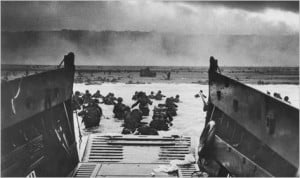 On June 6th, 1944, there was no CNN, no Twitter or Facebook and the task of covering one of the biggest news stories of the century became radio’s challenge. The gargantuan task of reporting the D-Day landings in France [image] lead to the invention of the pool broadcast, where every network’s correspondents filed stories for broadcast across all webs. It was one of the first times that recorded news actualities were allowed to air. Prior to D-Day the networks had policies (and technology) that required news broadcasts to be live.
On June 6th, 1944, there was no CNN, no Twitter or Facebook and the task of covering one of the biggest news stories of the century became radio’s challenge. The gargantuan task of reporting the D-Day landings in France [image] lead to the invention of the pool broadcast, where every network’s correspondents filed stories for broadcast across all webs. It was one of the first times that recorded news actualities were allowed to air. Prior to D-Day the networks had policies (and technology) that required news broadcasts to be live.
The CBS coverage of the first 48 hours after D-Day has been preserved and is in circulation among Old Time Radio collectors. In celebration of this historic day, here are three hour-long segments, starting before the official announcement and running through dawn. You’ll hear some amazing accounts by reporters who helped to define radio news for a generation.
CBS D-Day Coverage Part 1
CBS D-Day Coverage Part 2
CBS D-Day Coverage Part 3
Learn more about how radio covered D-Day HERE. And you can follow D-Day as it happened on Twitter.
Mrs. Burke! I thought you were Dale!
Courtesy of Keenerfan Jeff Smith, the classic Grape Nuts commercial from the 60s that most of us either loved or hated.
Happy Birthday Herb!
 Herb Alpert turns 78 today.
Herb Alpert turns 78 today.
Charting multiple times on the WKNR music guide, Herb enjoyed five national number ones, eight Grammy awards, fourteen platinum and fifteen gold LPs. With more than 70 million album sales worldwide, Herb Alpert is the only recording artist to hit number one with both an instrumental and a vocal. Oh yeah.. He and partner Jerry Moss are the founders of A&M records, too.
Alpert’s musical accomplishments include five number one hits, 28 albums on the Billboard charts, eight Grammy Awards, fourteen Platinum albums and fifteen Gold albums.
Happy Birthday, Herb!
http://www.youtube.com/watch?v=hkK04szvPf8
Pure Michigan, in the Keener Era
The Instamatic
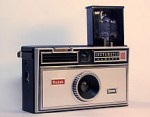 One of the other new brands that was launched in 1963 (besides WKNR) was the Instamatic Camera. These were the first cameras to utilize Kodak’s new 126 format. It was an easy-to-load film cartridge that contributed to the camera’s low production cost. A wide variety of print and slide film for the Instamatic was sold by Kodak in the 126 format.
One of the other new brands that was launched in 1963 (besides WKNR) was the Instamatic Camera. These were the first cameras to utilize Kodak’s new 126 format. It was an easy-to-load film cartridge that contributed to the camera’s low production cost. A wide variety of print and slide film for the Instamatic was sold by Kodak in the 126 format.
Following the tradition of Kodak’s famous Brownie camera, the Instamatic had a fixed shutter speed, aperture and focus, making it one of the easiest point-and-shoot cameras on the market. As it’s design improved the original built in flash gun was replaced by a four shot flash cube.
The product was an instant success with more than 50 million Instamatic cameras produced between 1963 and 1970. There was even an Instamatic movie camera that was the first to use the new Super 8 film format. After a number of design enhancements, the Instamatic brand left the marketplace in 1988.
Here are two vintage Instamatic TV commercials, the first introduces the Flash Cube..
http://www.youtube.com/watch?v=sYPci1FEzc0
The second, features a future Skywalker in an early acting role.
Keener Pop Culture Icon: Vic Perrin
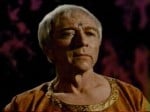 One of the pop culture personalities of the Keener generation was actor Vic Perrin. He appeared on just about every TV series there was during the Keener era, guesting on Dragnet, Peter Gunn, Black Saddle, Gunsmoke, The Untouchables, Going My Way, Perry Mason, Adam-12, Mannix, and Mission: Impossible. He has two significant sci-fi credits, including a role in three classic episodes of the original Star Trek and the disembodied Control Voice on the Outer Limits (“We will control the horizontal. We will control the vertical..”). A prolific voice actor during radio’s golden age, Perrin’s voice is familiar to Jonny Quest fans. He played many a villain during the series run, including Dr. Zin.
One of the pop culture personalities of the Keener generation was actor Vic Perrin. He appeared on just about every TV series there was during the Keener era, guesting on Dragnet, Peter Gunn, Black Saddle, Gunsmoke, The Untouchables, Going My Way, Perry Mason, Adam-12, Mannix, and Mission: Impossible. He has two significant sci-fi credits, including a role in three classic episodes of the original Star Trek and the disembodied Control Voice on the Outer Limits (“We will control the horizontal. We will control the vertical..”). A prolific voice actor during radio’s golden age, Perrin’s voice is familiar to Jonny Quest fans. He played many a villain during the series run, including Dr. Zin.
But did you know that, even after his death, he has saved thousands of lives? Perrin is the voice that provides audio instructions for all Automatic External Defibrillators, the ubiquitous “AEDs” we see at airports and other public venues. (With thanks to Steve Richey)
Crosby, Stills and Nash turn 44
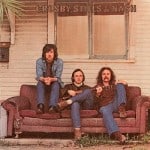 44 years ago this week. Crosby Stills and Nash released their first album as a trio. There are conflicting stories of how these alumni of Buffalo Springfield and the Hollies got together, but the one I like best is that it happened at a party at the home of Mama Cass Elliot. It is said that she heard them harmonizing as rock musicians often did back in the day, and suggested that they ought to make a record.
44 years ago this week. Crosby Stills and Nash released their first album as a trio. There are conflicting stories of how these alumni of Buffalo Springfield and the Hollies got together, but the one I like best is that it happened at a party at the home of Mama Cass Elliot. It is said that she heard them harmonizing as rock musicians often did back in the day, and suggested that they ought to make a record.
Before they knew it, they had a gig, performing at the legendary Woodstock Music and Art Fair, the one we all saw on the big screen in 1969. And here’s what happened.

